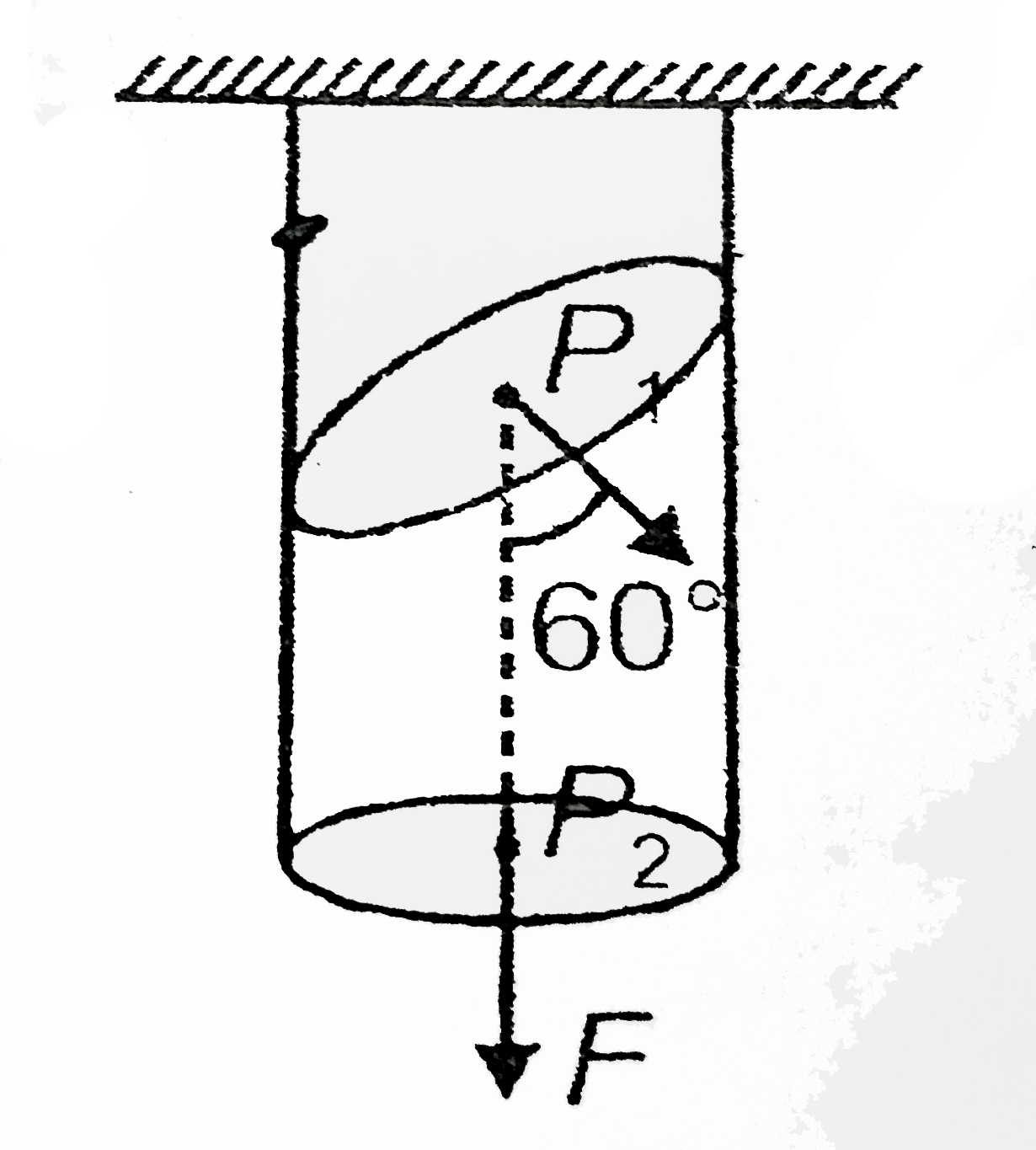Tensile stress is possible in
Liquids
Gases
Solids
Both (1) & (2)
To determine where tensile stress is possible, we need to understand the concept of tensile stress itself. Let's break it down step by step.
Step 1: Define Tensile Stress
Tensile stress is defined as the force (F) applied per unit area (A) of a material. It is given by the formula:
Tensile Stress=FA
where:
- F is the applied force,
- A is the cross-sectional area through which the force is applied.
Step 2: Identify the Conditions for Tensile Stress
Tensile stress occurs when a material is subjected to a pulling or stretching force. This means that the material must be able to resist deformation and return to its original shape after the force is removed.
Step 3: Analyze Different States of Matter
1. Solids: Solids can experience tensile stress because they have a definite shape and can resist deformation. When a solid like rubber is stretched, it can return to its original shape after the force is removed.
2. Liquids: Liquids cannot sustain tensile stress as they do not have a fixed shape. When a force is applied, they flow and do not return to a specific shape.
3. Gases: Similar to liquids, gases cannot sustain tensile stress. They expand to fill their container and do not have a fixed shape, so they cannot resist tensile forces.
Step 4: Conclusion
From the analysis, we can conclude that tensile stress is possible in solids. Therefore, the correct answer to the question "Tensile stress is possible in" is solids.
Summary of the Steps:
1. Define tensile stress using the formula FA.
2. Identify that tensile stress occurs under stretching conditions.
3. Analyze the behavior of solids, liquids, and gases under tensile forces.
4. Conclude that tensile stress is possible only in solids.
Tensile stress is defined as the force (F) applied per unit area (A) of a material. It is given by the formula:
Tensile Stress=FA
where:
- F is the applied force,
- A is the cross-sectional area through which the force is applied.
Tensile stress occurs when a material is subjected to a pulling or stretching force. This means that the material must be able to resist deformation and return to its original shape after the force is removed.
1. Solids: Solids can experience tensile stress because they have a definite shape and can resist deformation. When a solid like rubber is stretched, it can return to its original shape after the force is removed.
2. Liquids: Liquids cannot sustain tensile stress as they do not have a fixed shape. When a force is applied, they flow and do not return to a specific shape.
From the analysis, we can conclude that tensile stress is possible in solids. Therefore, the correct answer to the question "Tensile stress is possible in" is solids.
1. Define tensile stress using the formula FA.
2. Identify that tensile stress occurs under stretching conditions.
3. Analyze the behavior of solids, liquids, and gases under tensile forces.
4. Conclude that tensile stress is possible only in solids.
Topper's Solved these Questions
Similar Questions
A bar of cross section A is subjected to equal and opposite tensile forces F at its ends. Consider a plane through the bar making an angle θ with a plane at right angles to the bar as shown in figure.

The tensile stress at this plane in terms of F, A and θ is
View SolutionA massless uniform rod is subjected to froce F at its free end as shown in figure. The ratio of tensile stress at plane P1 to stress at P2 is

View Solution
Knowledge Check
According to Hooke's law, within the elastic limit stress/strain = constant. This constant depends on the type of strain or the type of force acting. Tensile stress might result in compressional or elongative strain, however, a tangential stress can only cause a shearing strain. After crossing the elastic limit, the material undergoes elongation and beyond a stage beaks. All modulus of elasticity are basically constants for the materials under stress.
If stress/strain is x in elastic region and y in the region of yield, thenAx=yBx>yCx<yDx=2yUnit of stress is
AN/mBN−mCN/m2DN−m2The tensile stress is related to the term change in
Ashape of a bodyBlength of a bodyCsize of a bodyDvolume of a body
The stored energy per unit volume of a stretched wire is
View SolutionThe velocity of transverse wave in a wire of density 8000kgm3 is 300 m/s. The tensile stress in the wire is
View SolutionAn elastic material with Young's modulus Y is subjected to a tensile stress S, elastic energy stroed per unit volume of the material is
View SolutionFor a steel wire, stress is directly proportional to strain. This is possible only when
View SolutionA steel wire having a radius of 2.0 mm, carrying a load of 4 kg, is hanging from a ceiling. Given that g=3.1πms−2 , what will be the tensile stress that would be developed the wire ?
View Solution
